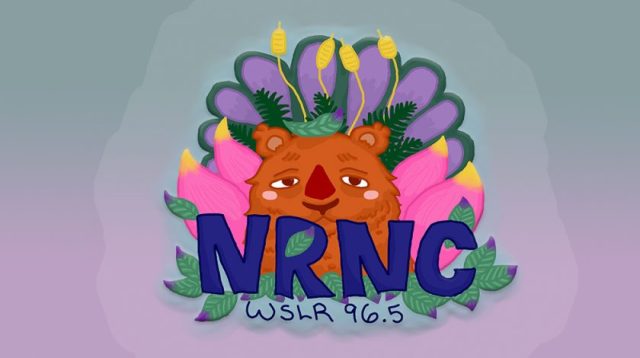Not only was this past weekend the 50th reunion of the cohort of 1970, but it was also the 50-year anniversary of the name-changing and sometimes silent New Radio. On Saturday, Feb. 22, three alums met on a panel in Heiser to reminisce about their different radio eras. Speakers included Laurel Roth Patton (‘68), Stu Levitan (‘72) and David Bryant (‘91). One commonality among the speakers and past programmers who sat in the audience was whether or not anyone was listening to the station.
Patton, who sported spiky purple hair, hosted a Delta Blues show back in the day. Though she has worked in various career fields, music has always been a constant in her life. She continued to make playlists over the years and, on Thursday, Feb. 20, her playlist “My Bipolar Summer Playlist” was featured on WSLR. That playlist is currently available on Spotify.
Levitan was a late-night disc jockey (DJ) and pursued print and broadcast journalism after school. He settled in Madison, Wis. to host public affairs programming, artist interviews and music features on 89.9 WORT.
Bryant volunteers and works in nonprofit radio stations like 88.5 WMNF Tampa and has had a Monday night show called “Soul Kitchen” for the past four years. He was a founding board member of WSLR Radio in the early 2000s, a more recent development of New Radio.
The first programming of a radio station was mentioned in the school newspaper, Captain Jack, on Feb. 9, 1970. Tim Snyder (‘67), who was present on the recent panel, was a co-founder of WNCR. At first, broadcasting was only available to the Palmer Campus because the radio was running through the New College electrical system on a “carrier current.” The station had a low enough frequency that it did not need an Federal Communications Commission (FCC) license, meaning the original broadcasting environment had an ‘anything goes’ feel to it.
“Even though it was limited to the dorms, it was still a cool thing to be able to go down there late at night to program stuff and think that maybe someone was listening,” Levitan said.
After the introduction of each panelist, Snyder opened up the floor to other programmers. Another DJ in the audience from the 1970s, David Silverman, recalled his journey from music programming to professional communications law, providing another example of the balance alums found between their passions and their career interests. The seven oral histories shared in the room weaved together a patchwork timeline of the radio’s progression up through 1997.
There are gaps in the history of and growth of the station, especially in the 1980s, but current board member of WSLR and third-year Jenna Courtade’s love of history helped fill in some of the story.
“There are currently in the archives, these set lists from the late 70s and early 80s and then the late 80s and the early 90s,” Courtade said.
As part of her Independent Study Project (ISP) during her second year, Courtade digitized the set lists and published them to YouTube and the forum. The rediscovery of these melodic artifacts likely contributed to the organization of the Radio Daze event as part of this year’s reunion.
“Not to say that I am the cause of all this, but with my ISP, I think a lot of people were like, oh my gosh, I loved the radio station and it got a lot of people talking,” Courtade explained.
Local radio has changed significantly since the 1970s. After the radio’s absence in the early 1980s, students were interested in extending the radio’s signal beyond the Pei dorms and receiving better equipment so they were not crawling through the Pei tunnels attempting to connect wires.
In 2003, students applied for an FCC license and bidded for the low-power frequency 96.5. Getting the license demanded better-informed media content and less New College-specific programming and cursing.
In 2003, students approached Dave Beaton and Arlene Sweeting, who were also bidding for the frequency, to collaborate and make the station both community and student-run while allowing the school to win the bid. The school gave the license to the community-programming side of WSLR in 2009 with specific bylaws that stated one student must be on the board of directors and there must be internships and time reserved for students to program.
The station moved to its current location at 525 Kumquat Court in 2011. However, the station still only has the wattage of a lightbulb, meaning the frequency only reaches a few miles from the satellite. As such, the station offers online access to the live programming through their website. Unlike the station in the 1970s, WSLR is also able to archive their programs in case a listener missed the scheduled program.
Archives were discussed at the panel because of how radio has changed due to rapid technological advancements in the past 50 years. The atmosphere was one of admiration for the power of the archive, but also a tension over the future of print and radio journalism. The discussion closed with final remarks to current students pursuing media and communication studies.
“Journalism is one of the highest callings you can have outside of the actual healing arts,” Levitan stated. “You have the responsibility and opportunity to look behind the curtain and see what is happening and understand what is happening and explain that to people so that they can take the appropriate action.”
New Radio at WSLR occurs every day except for Monday and Tuesday at different times between 11 p.m. and 3 a.m.
Information for this article was obtained from wslr.org

